harmanjit_kaur
Waheguru Waheguru
The fairs of the Punjab are linked with its culture and reflect by and large, the various phases of its life. Some of the distinct Punjabi traits are depicted in them. They may be divided into the following types: i) Seasonal fairs, ii) Mythical fairs, iii) Fairs held in honour of saints, iv) Fairs connected with festivals.
Fairs or Meles in Punjabi are synonymous with the joy and gaiety; and in the countryside where the life follows a hard routine, nothing is more welcome to the people than the prospect of a festival or a mela. A rural mela in Punjab has a great significance.
Punjabi Fairs:
Basant Panchami
Basant Panchami is the most famous of the seasonal fairs. It heralds the advent of spring. Fields of mustard present a unique and colourful sight all over rural Punjab which looks like a newly wedded damsel resplendent in her gorgeous golden yellow. There is a spirit of gay abandon in the air and the Punjabi is rightly infected with the spirit.
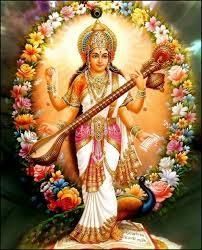
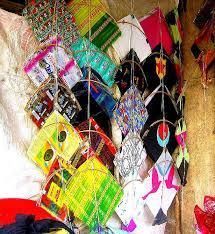
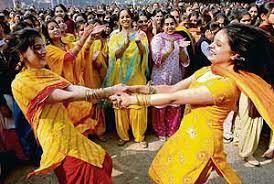
Baisakhi:
It is one of the most popular festivals of the Punjab, with fairs held at various places. Baisakhi, the first day of the month of Baisakh (April/May) is New Year’s Day, going by the Saka calendar. It corresponds to April 13th of the Gregorian calendar. Essentially it is a North Indian harvest festival, for it is the day when the reaping of the rabi (winter crop) begins.
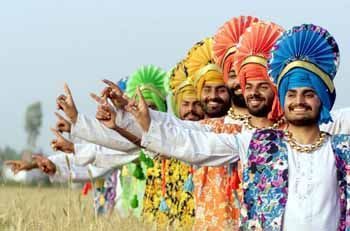
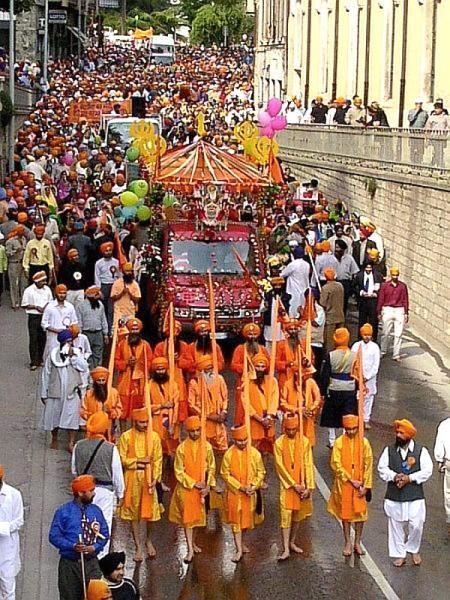
Chhapar Fair:
This fair is held on Anand Chaudas, the 14th day of the bright half of Bhadon in honour of Gugga Pir. A big shrine known as 'Gugge di Marhi' has been built in his memory. The Pir was very popular in his time, and his disciples can be found all over the Punjab.
Jarag Fair
This fair is held in Jarag, a village in tehsil pail. It is held in Chet (March-April) in honor of the goddess Seetla. It is also known as the Baheria fair. Sweet gurgulas ( jaggery cakes fried in oil) are prepared one day earlier and then given in offering to the goddess and thereafter to the donkey who is her favourite.
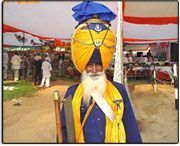
Roshni Fair:
The Roshni (lights) Fair is held in Jagranvan from the 14th to the 16th of Phalgun in honour of the Muslim Pir, Abdul Kader Jalani. It is held in the vicinity of his tomb. Although it is a Muslim fair in origin, the Hindus of the area also flock to the site of this shrine.
Haider Sheikh at Malerkotla:
A big fair is held for four days every year in Malerkotla at the shrine of Haider Sheikh. It is largely attended. It is believed that if childless women visit the shrine of Haider Sheikh and propitiate the pir, their wish for progeny is granted.
Dhesian Sang:
On the 14th of Chet, a fair is held in Dhesian Sang (Philaur) at the shrine and in honor of Baba Sang.
Khwaja Roshan:
Another fair is held at the tomb of Khwaja Roshan in Har on every first Thursday after the new moon.
Mir Shah Husain:
In Nakodar a Hindu-Muslim fair is held at village Kara at the shrine of Mir Shah Husain, who, according to legend, lived about five hundred years ago.
Baba Jawahar Singh:
At Khatkar Kalan (Nawanshehar) a fair is held on Baisakhi day in memory of Baba Jawahar Singh.
Shiy Chaudas:
Shiy Chaudas, is held at Paddi Matwali (Nawanshehar) on the 14th of Chet on the bank of the river Bein.
Nathana:
In March, at Nathana (Ferozepur) a fair is held in honor of a Hindu saint, Kalu. He is said to have dug a large pond in one scoop and deposited the dug-up earth in a close by heap, which now forms the object of popular veneration.
Muktsar Fair:
The Muktsar fair is one of the largest Sikh fairs held in Punjab. The fair is held in the middle of January on the Makar Sankranti day. The festival is in commemoration of a battle fought in 1705-1706 by Guru Gobind Singh against the pursuing imperial forces which overtook him here and cut his followers to pieces.
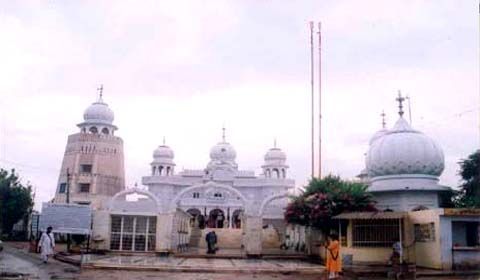 Jor Mela:
Jor Mela:
This mela is held in December at Sirhind(Fatehgarh Sahib). It is celebrated in the memory of Guru Gobind Singh's younger sons who were entombed alive here by the mughals. Today it is an important center of pilgrimage, drawing the devout to pay homage.
Fairs or Meles in Punjabi are synonymous with the joy and gaiety; and in the countryside where the life follows a hard routine, nothing is more welcome to the people than the prospect of a festival or a mela. A rural mela in Punjab has a great significance.
Punjabi Fairs:
Basant Panchami
Basant Panchami is the most famous of the seasonal fairs. It heralds the advent of spring. Fields of mustard present a unique and colourful sight all over rural Punjab which looks like a newly wedded damsel resplendent in her gorgeous golden yellow. There is a spirit of gay abandon in the air and the Punjabi is rightly infected with the spirit.



Baisakhi:
It is one of the most popular festivals of the Punjab, with fairs held at various places. Baisakhi, the first day of the month of Baisakh (April/May) is New Year’s Day, going by the Saka calendar. It corresponds to April 13th of the Gregorian calendar. Essentially it is a North Indian harvest festival, for it is the day when the reaping of the rabi (winter crop) begins.


Chhapar Fair:
This fair is held on Anand Chaudas, the 14th day of the bright half of Bhadon in honour of Gugga Pir. A big shrine known as 'Gugge di Marhi' has been built in his memory. The Pir was very popular in his time, and his disciples can be found all over the Punjab.
Jarag Fair
This fair is held in Jarag, a village in tehsil pail. It is held in Chet (March-April) in honor of the goddess Seetla. It is also known as the Baheria fair. Sweet gurgulas ( jaggery cakes fried in oil) are prepared one day earlier and then given in offering to the goddess and thereafter to the donkey who is her favourite.

Roshni Fair:
The Roshni (lights) Fair is held in Jagranvan from the 14th to the 16th of Phalgun in honour of the Muslim Pir, Abdul Kader Jalani. It is held in the vicinity of his tomb. Although it is a Muslim fair in origin, the Hindus of the area also flock to the site of this shrine.
Haider Sheikh at Malerkotla:
A big fair is held for four days every year in Malerkotla at the shrine of Haider Sheikh. It is largely attended. It is believed that if childless women visit the shrine of Haider Sheikh and propitiate the pir, their wish for progeny is granted.
Dhesian Sang:
On the 14th of Chet, a fair is held in Dhesian Sang (Philaur) at the shrine and in honor of Baba Sang.
Khwaja Roshan:
Another fair is held at the tomb of Khwaja Roshan in Har on every first Thursday after the new moon.
Mir Shah Husain:
In Nakodar a Hindu-Muslim fair is held at village Kara at the shrine of Mir Shah Husain, who, according to legend, lived about five hundred years ago.
Baba Jawahar Singh:
At Khatkar Kalan (Nawanshehar) a fair is held on Baisakhi day in memory of Baba Jawahar Singh.
Shiy Chaudas:
Shiy Chaudas, is held at Paddi Matwali (Nawanshehar) on the 14th of Chet on the bank of the river Bein.
Nathana:
In March, at Nathana (Ferozepur) a fair is held in honor of a Hindu saint, Kalu. He is said to have dug a large pond in one scoop and deposited the dug-up earth in a close by heap, which now forms the object of popular veneration.
Muktsar Fair:
The Muktsar fair is one of the largest Sikh fairs held in Punjab. The fair is held in the middle of January on the Makar Sankranti day. The festival is in commemoration of a battle fought in 1705-1706 by Guru Gobind Singh against the pursuing imperial forces which overtook him here and cut his followers to pieces.

This mela is held in December at Sirhind(Fatehgarh Sahib). It is celebrated in the memory of Guru Gobind Singh's younger sons who were entombed alive here by the mughals. Today it is an important center of pilgrimage, drawing the devout to pay homage.
Last edited by a moderator:
